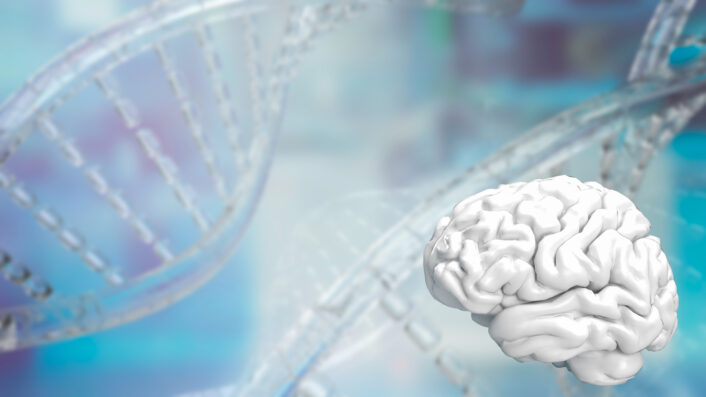

Disclaimer: This article is for informational purposes only and is not intended to diagnose any conditions. LifeDNA does not provide diagnostic services for any conditions mentioned in this or any other article.
Pyruvate Dehydrogenase Deficiency (PDD) is a rare genetic disorder that affects the body’s ability to convert pyruvate into acetyl-CoA, a key molecule in cellular energy production. Around 1 in 50,000 births in the USA are affected by PDD.
This condition leads to the accumulation of lactic acid in the blood (lactic acidosis) and impaired energy metabolism. This primarily affects the brain and nervous system. Understanding the genetic basis of PDD is essential for diagnosis, management, and potential treatment strategies.
The Pyruvate Dehydrogenase Complex (PDC) is a multi-enzyme structure. Its role is to hasten the conversion of pyruvate into acetyl-CoA, which then enters the Krebs cycle to make ATP.
When food enters your body it is instantly welcomed by hundreds of biochemical processes happening in tandem. One of these processes is called glycolysis. During glycolysis, the carbohydrates are broken down to their simplest form, a sugar called glucose. Once glucose is made, it needs to be processed in a way that is compatible for it’s use in another chain of biochemical reactions called Kreb’s cycle (also known as the Citric Acid Cycle). Kreb’s cycle is ultimately responsible for making energy that cells can use (through ATP).
This is where pyruvate plays an important role. Pyruvate turning into acetyl-CoA is like a bridge. Through this process the products of sugar breakdown (glycolysis) are prepared for the cell’s main energy factory (the Kreb’s cycle).
In simple terms, once glucose is split into 2 pyruvates, these are transformed into acetyl-CoA so that they can enter the cycle that churns out lots of ATP (the cell’s energy currency).
If this conversion doesn’t happen, the cell can’t fully capture the energy stored in glucose.
Let’s take a look at PDC in more depth to understand the genetic impact in upcoming sections better.
The PDC consists of three primary enzyme components:
PDC also includes regulatory proteins such as PDHX, PDP1, and PDPR, which help control enzyme activity. Mutations in any of these genes can lead to PDD, with PDHA1 mutations being the most common cause.
PDD is primarily caused by mutations in the PDHA1 gene, located on the X chromosome. Since PDHA1 is X-linked, the inheritance pattern differs between males and females:
While X-linked PDD is the most common form, mutations in autosomal genes like PDHX, DLAT, and DLD follow an autosomal recessive inheritance pattern. In these cases, an individual must inherit two defective copies (one from each parent) to develop the disorder.
PDD primarily affects energy-demanding tissues, such as the brain, muscles, and heart. Symptoms vary in severity but commonly include:
Diagnosing PDD involves a combination of biochemical tests and genetic analysis:
There is no cure for PDD, but treatment focuses on managing symptoms and optimizing metabolic function:
High-fat, low-carb diets help bypass the need for a functional Pyruvate Dehydrogenase Complex (PDC) by using ketones as an alternative energy source.
In a 2017 study, nineteen patients, mostly with prenatal-onset disease, were treated with a ketogenic diet for a median of 2.9 years. The diet improved symptoms such as epilepsy, ataxia, sleep, speech, and social function, and reduced hospitalizations, though with one patient having to stop the intervention due to pancreatitis. Poor diet adherence led to relapsing ataxia and stalled development.
Thiamine Supplementation
Some patients respond to high-dose vitamin B1 (thiamine), a cofactor of PDC.
A case report published in 2022, describes a 2-year-old Japanese boy with a novel PDHA1 gene mutation (p.T111I) and thiamine-responsive PDHC deficiency. He experienced recurrent episodes of muscle weakness, ataxia, and elevated lactate levels. Initial treatments with standard thiamine doses were ineffective, but higher doses (up to 1,000 mg/day) improved symptoms. Long-term thiamine therapy stabilized his condition, with no attacks for 18 months (during the study period).
Dichloroacetate (DCA)
This experimental drug helps reduce lactic acidosis by stimulating pyruvate dehydrogenase phosphatase.
Supportive Care
Physical therapy, speech therapy, and anticonvulsant medications help manage symptoms.
Pyruvate dehydrogenase deficiency is a complex genetic disorder that severely impacts energy metabolism, primarily affecting the nervous system. Understanding the genetic mutations involved, particularly in PDHA1, is key to accurate diagnosis and personalized treatment strategies. Advances in metabolic therapy and genetic research may pave the way for more effective treatments in the future, offering hope to individuals affected by this rare but debilitating condition.


